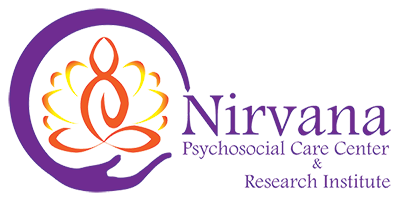Orthodontic Management of Skeletal Class II Malocclusion with Horizontally Impacted Maxillary Canine: A Case Report
Abstract
Management of skeletal class II relation in growing patient require careful evaluation of growth status, proper diagnosis and treatment plan to address the patient’s need. Twin block is the appliance of choice among functional appliance to correct the skeletal class II malocclusion due to it’s acceptability by the patient and simplified design. Maxillary canine impaction is the second most prevalent impaction after the third molars. Treatment of maxillary canine impaction is usually a challenge to orthodontic approach as the defect lies in the esthetic region of the jaw.
This case report describes the orthodontic management of a 9 years male patient having skeletal Class II malocclusion with horizontally impacted maxillary canine. Some modifications in the treatment mechanics are deemed essential to address the patient’s need for achieving the optimal esthetic and to improve the occlusion.
Twin block is beneficial for the treatment of skeletal malocclusion in a growing patient to achieve the maximum benefit. The orientation of impacted teeth may change from horizontal to favorable one, hence it should be considered a viable treatment alternative. In such case, early diagnosis and interception at the right time along with radiographic follow-ups are necessary to achieve successful results.
References
Clark WJ. The twin block technique. A functional orthopedic appliance system. Am J Orthod Dentofacial Orthop 1988;93:1‑18. https://doi.org/10.1016/0889-5406(88)90188-6 [PubMed] [Google Scholar]
Gandhi V, Mehta F, Joshi H. Treatment of class II malocclusion and impacted canines with two-phase orthodontic treatment. Contemp Clin Dent 2017;8:161-6. https://doi.org/10.4103/ccd.ccd_394_16 [PubMed] [Google Scholar]
Kuftinec MM and Shapira Y. The impacted maxillary canine: I. Review of concepts. J dent Child 1995;62:317-324. [PubMed] [Google Scholar]
Kuftinec MM and Shapira Y. The impacted maxillary canine: II. Clinical approaches and solutions. J dent Child 1995;62:325-334. [PubMed] [Google Scholar]
Bishara SE. Impacted maxillary canines: a review. Am J Orthod Dentofacial Orthop. 1992;101:159-171. https://doi.org/10.1016/0889-5406(92)70008-X [PubMed] [Google Scholar]
Kurol J. Early treatment of tooth-eruption disturbances. Am J Or¬thod Dentofacial Orthop. 2002;121:588-91. https://doi.org/10.1067/mod.2002.124173 [PubMed] [Google Scholar]
Andrade Jr. I, Paschoal MAB, Santos TO. Spontaneous Eruption of Severely Impacted teeth: The Report of Two Cases. J Clin Exp Dent. 2019;11(5):e491-5. https://doi.org/10.4317/jced.55514 [PubMed] [Google Scholar]
Nanda R. Biomechanics in Clinical Orthodontics. 1997;99-108, W.B. Saunders Co., Philadelphia. [FullText] [PubMed] [Google Scholar]
Premkumar S, Shameer SF, Tovani-Palone MR. Management of impacted maxillary canines: a case report Electron J Gen Med 2019;16(5):em155. https://doi.org/10.29333/ejgm/108498 [PubMed] [Google Scholar]
Seehra J, Yaqoob O, Patel S et al. National clinical guidelines for the management of unerupted maxillary incisors in children. Br Dent J. 2018;224(10):779-85. https://doi.org/10.1038/sj.bdj.2018.361 [PubMed] [Google Scholar]
Kettle MA. Treatment of the unerupted maxillary canine. Dent Pract Dent Rec 1958;8:245-255. [PubMed] [Google Scholar]
Kokich VG, Mathews DA. Impacted teeth: surgical and orthodontic considerations. In: McNamara Jr JA, editor. Orthodontics and dentofacial orthopedics. Ann Arbor, Mich: Needham Press; 2001. [PubMed] [Google Scholar]
Baccetti T, Franchi L, James A, McNamara J. The cervical vertebral maturation (CVM) method for the assessment of optimal treat¬ment timing in dentofacial orthopedics. Semin Orthod. 2005;11:119–129. https://doi.org/10.1053/j.sodo.2005.04.005 [PubMed] [Google Scholar]
Demirjian A, Goldstein H, Tanner JM. A new system of dental age assessment. Hum Biol. 1973;45(2):211–227. [PubMed] [Google Scholar]
Giri J, Shrestha BK, Yadav R, Ghimire TR. Assessment of skeletal maturation with permanent mandibular second molar calcification stages among a group of Nepalese orthodontic patients. Clinical, Cosmetic and Investigational Dentistry 2016;8:57–62. https://doi.org/10.2147/CCIDE.S93561 [PubMed] [Google Scholar]
Mills CM, McCulloch KJ. Treatment effects of the twin block appliance: A cephalometric study. Am J Orthod Dentofacial Orthop 1998;114:15‑24. https://doi.org/10.1016/s0889-5406(98)70232-x [PubMed] [Google Scholar]
Mills JR. The effect of functional appliances on the skeletal pattern. Br J Orthod 1991;18:267‑75. https://doi.org/10.1179/bjo.18.4.267 [PubMed] [Google Scholar]
Pancherz H. The mechanism of class II correction in Herbst appliance treatment. Am J Orthod Dentofacial Orthop 1982;82:104‑13. https://doi.org/10.1016/0002-9416(82)90489-4 [PubMed] [Google Scholar]
Becker A. The orthodontic treatment of impacted teeth. 1998: 25-150, Martin Dunitz Ltd., London. [FullText] [PubMed] [Google Scholar]
Mochizuki K, Tsujino K, Yonezu T, Yakushiji M. The horizontally impacted maxillary canine situated in a labial position. Tokyo dent. Coll. 1999;40(4):203-208. https://doi.org/10.2209/tdcpublication.40.203 [PubMed] [Google Scholar]
Copyright (c) 2021 Authors

This work is licensed under a Creative Commons Attribution 4.0 International License.
All articles published in EJMS are licensed under the Creative Commons Attribution 4.0 International License (CC-BY 4.0). The author(s) as the copyright holder will retain the ownership of the copyrights without any restrictions for their content under the CC-BY 4.0 license, and allow others to copy, use, print, share, modify, and distribute the content of the article even in commercial purpose as long as the original authors and the journal are properly cited. No permission is required from the author/s or the publishers. Appropriate attribution can be provided by simply citing the original article.
On behalf of all the authors, the corresponding author is responsible for completing and returning the agreement form to the editorial office. More information about the terms and conditions, privacy policies, and copyrights can be found on the webpage of the Creative Commons license privacy policy. https://creativecommons.org/licenses/by/4.0/
















